Back to Sidestreet Bannerworks
Click here to find out how your engine can be featured!
.


Cheddar's 4-6-0 Philadelphia
by Jason Kovac
Lakewood, New Jersey
Photos by the author
April, 2011
The following information about Philadelphia came from the PPS Steam Models web site:
"During the First World War, the British Government placed an order in America for a quantity of 495, 2' gauge 4-6-0T locomotives. All were built and delivered between the autumn of 1916 and the spring of 1917. The design followed standard American practice.
"Many of these locomotives, including Philadelphia, were sent to France for use on military duties. Philadelphia eventually found her way to Australia, where she was converted to a tender loco for use in the sugarcane fields of Queensland. She has now been preserved as an oil burner and runs on the Dreamland site in Queensland."
The model
Cheddar's Philadelphia was but to a very high standard. Only a few are known to exist. This was Cheddar's last loco built before going out of business in 2005.
Running characteristics are typical of Cheddar locomotives -- very smooth and easy to control. The throttle is a slide valve under the boiler, controlled directly by a servo. Reversing is lever actuated by a servo, which flips from forward to reverse. The odd valve gear, designed by John Turner and also used on his locomotives, is tied into the main rod and all hung outside. With this design no adjustment is ever needed. There is only the ability to adjust the valve placement, not the timing.
All R/C gear and batteries are neatly tucked in the cab. I swapped the receiver for a DX6 so I can control it with my existing radio.
There is a long, single-chime whistle, which is very shrill but works well on very low pressure. I will have to find a way to limit the pressure or valve travel to limit the amount of steam to the whistle.
The loco runs flawlessly and will run for about 30 minutes on a single boiler filling. The gas runs for much longer.
The loco and tender are solidly built of brass, all soldered up. The one drawback is that there is no boiler shell -- everything is soldered directly to the boiler.
The engine is not designed for running in our cold New Jersey weather. I tried but couldn't raise 15 psi after 20 minutes at about 30 degrees F.
There is a huge gas tank in the tender, about 6" x 2" x 1".
Here's a video of the engine in action. If for some reason you can't see it, click here.
|
|
|
| Builder | Cheddar Models (UK) |
| Date built | Circa 2004 |
| Gauge | 45 mm (gauge 1) |
| Scale | 1:20.3 |
| Boiler | Single flue with cross tubes |
| Fittings | Regulator, whistle valve, pressure gauge, safety valve. Hand pump in tender |
| Fuel | Butane gas |
| Blow-off pressure | ?? psi |
| Cylinders | Two double-acting with D-valves |
| Reversing gear | Turner |
| Lubricator | Displacement, with separate meter valves for both cylinders |
| Dimensions | Length, 26-3/4"; width, 4-1/2”; height, 7-3/4” |
| Weight | 7 lbs. 4 oz. (incl. 1/2 lb. of lead) |
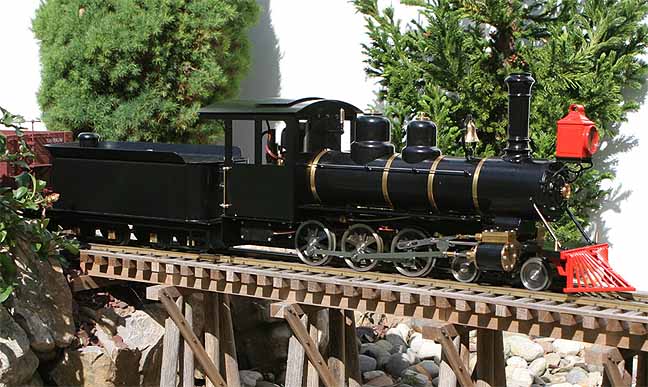
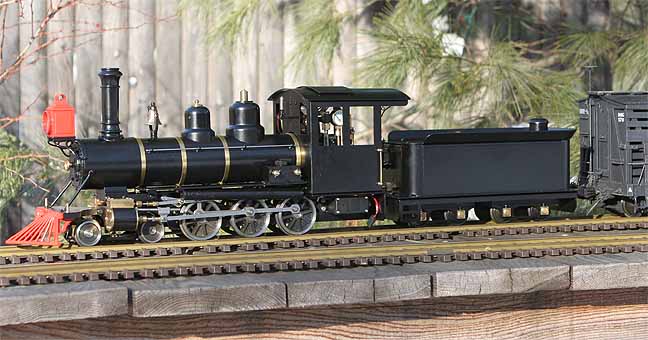
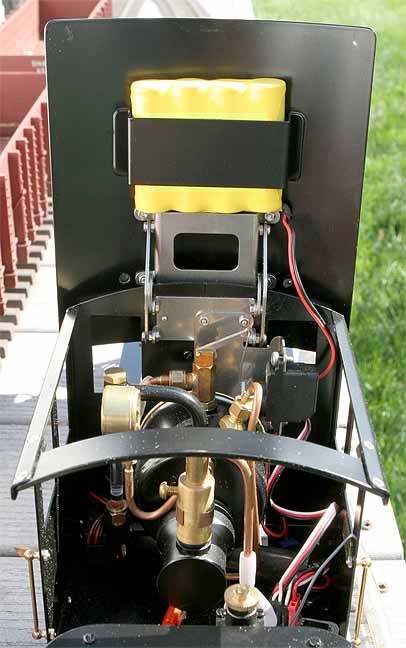
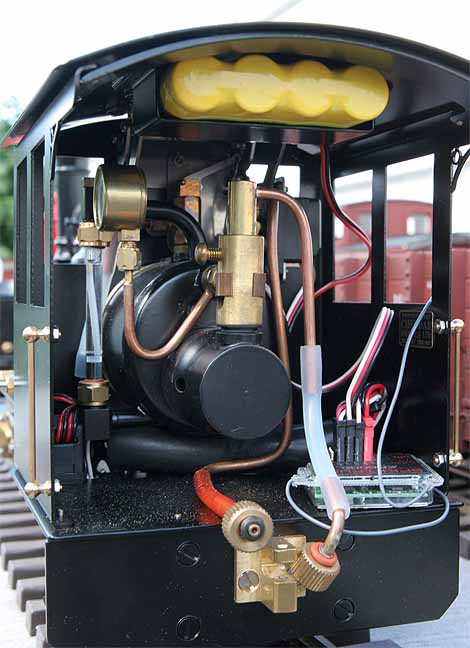
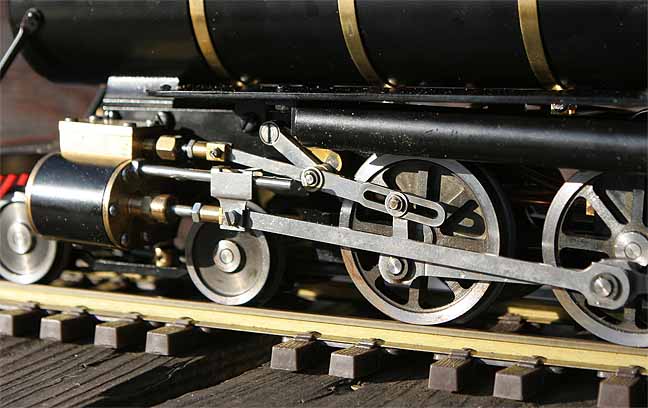
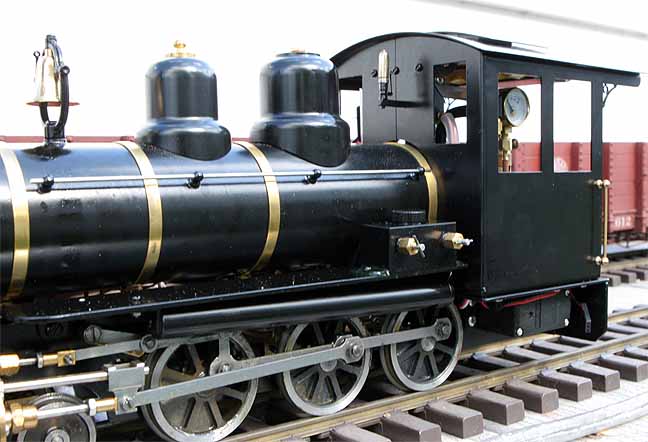

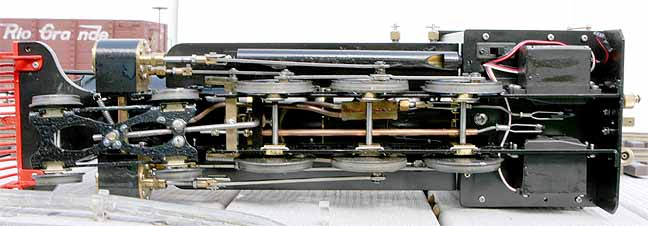
Back to Sidestreet Bannerworks
Click here to find out how your engine can be featured!
This page and its contents
Copyright Sidestreet Bannerworks, 2011